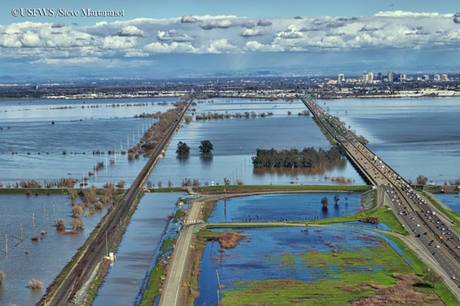GR: If you’ve ever wondered if we could get along without nature, if you’d like to know if the only plants we need are those we plant for food, and if you wonder if the only animals we need are those we ride or eat, you may find this article interesting. It’s concerned with maintaining and restoring one of nature’s essential functions and one of the richest types of ecosystems.
Restoring Floodplains: A Multi-Benefit Strategy in a Warming Climate

“If you think something strange is happening here, you’re right. The last seven years have included a wet 2011, five years of drought (2012-2016) – four of which were the driest four-year period in state history – and now an extraordinarily wet 2017.
“This fluctuation from wet to dry – without anything approaching average conditions – is consistent with the projections of climate scientists. In 2011, the State of California warned “(a)s the climate warms, extreme events are expected to become more frequent, including wildfires, floods, droughts, and heat waves.”
“You don’t need to make a trek to the arctic to see on-the-ground impacts of climate change. Californians can simply look to their local rivers or the Sierra Nevada. The Sierra snowpack is now the largest in two decades – 177 percent of average. This comes just two years after a record low snowpack that was only 6 percent of average. Californians are already seeing more extreme weather events.
“The last five years taught Californians that we need to make conservation a way of life and that we must invest in tools like water recycling that are drought resilient. This year – and the weather patterns of the past seven years – teach us that California must prepare for floods as well.
How can we prepare for floods?

Floodplain: The normal overflow zone that fills with water after rainfall. It must be large enough to handle the runoff from heavy rainfall, and it must be well vegetated with flood-tolerant shrubs and trees that slow the water. This is necessary to prevent erosion and the sudden arrival of too much water downstream. (Diagram from Wired.)
“One of the best ways is to restore portions of our historic floodplains to increase the ability of our rivers to handle high flows. We’ve seen the flood-protection benefits of floodplains this year. By opening gates to the Yolo Bypass floodplain, flood managers have lowered the risk to the cities of Sacramento and West Sacramento, and avoided potentially catastrophic flooding.” –Rachel Zwillinger (Continue reading: Floodplain Restoration – Defenders of Wildlife Blog).

